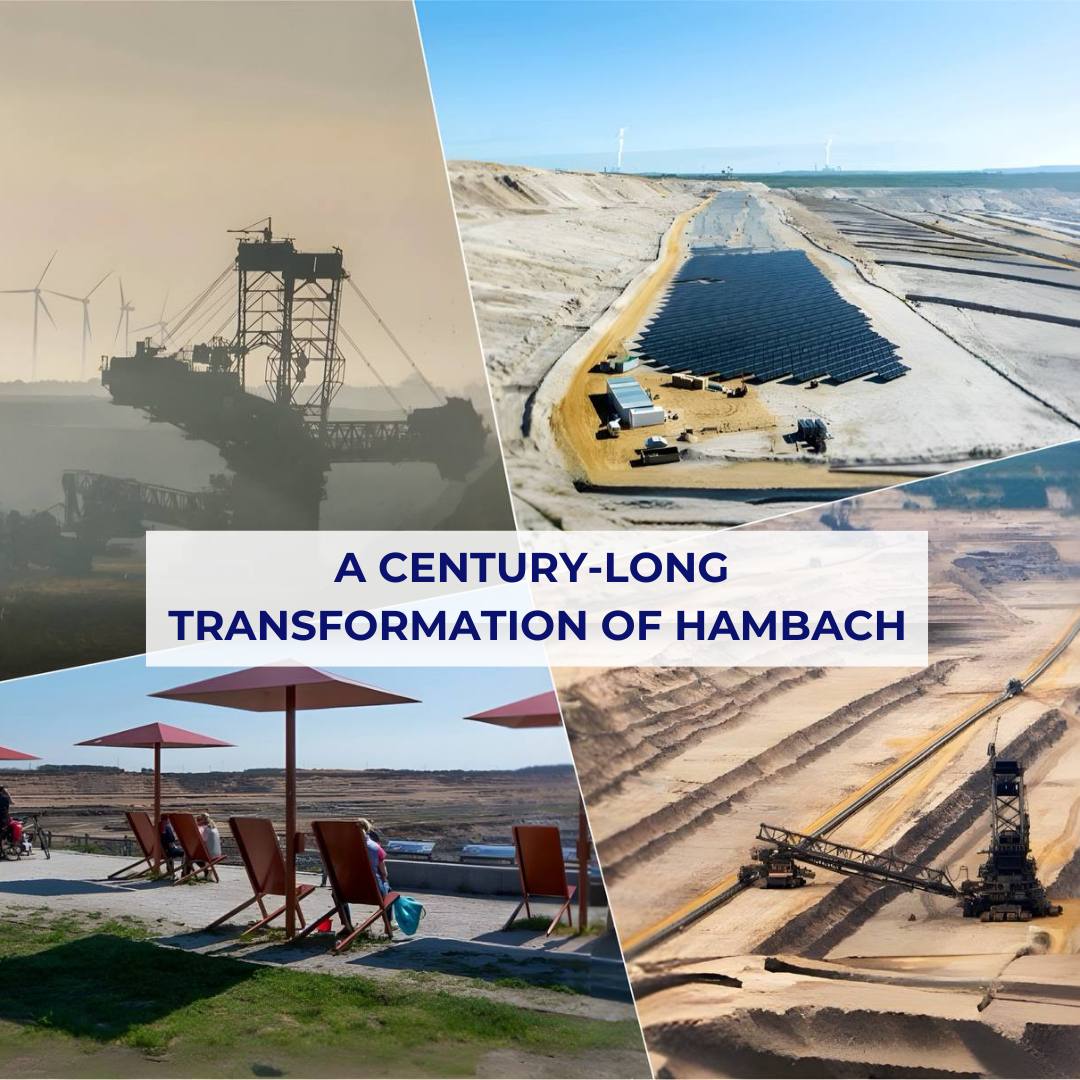Hambach: A Century-Long Transformation
In the lignite mining community of Hambach, Germany, lies the largest open-pit lignite mine in Europe. The authorities had no plans to cease mining in the coming decades—until local residents and environmental activists changed the course of events.
This shift was driven by the presence of the ancient Hambach Forest, located on the edge of the mine. Continued mining activity threatened the forest’s survival. Over the years, the country witnessed sustained protests, which gradually became a powerful symbol of resistance to environmental degradation caused by the coal industry.
Germany’s nationwide anti-coal movement contributed to a broader shift in national energy policy. Public pressure ultimately led to a landmark decision: to protect the forest and gradually decommission the mine. The site is now set to become a lake, which will be filled with water from the Rhine River over the span of several decades.
Authorities and residents from six neighboring municipalities joined efforts to develop a long-term regional transformation plan. The future of the area includes landscape and infrastructure restoration, residential development, regenerative agriculture, sustainable water management, and the growth of renewable energy enterprises.
Among the first planned projects are eco-friendly road systems and an innovative traffic management network. A particularly notable initiative is the intermunicipal cycling route known as the “Hambach Loop.” Designed not only for recreation and tourism, it is also intended to serve as a practical daily route for residents.
The region is already constructing its third large-scale solar power plant, and the shift toward renewable energy is becoming one of the cornerstones of its structural transformation.
Importantly, residents of all six municipalities are actively engaged in shaping the region’s future. Experts in landscape planning, conservation, tourism, economics, and water resource management—as well as academics from universities and research institutions—are closely involved in the planning and consultation process.
The community has put forward a range of development ideas, including the construction of a tourism and information center and the farming of salmon in the waters of the future lake. All proposals are currently being analyzed, categorized, and assessed for feasibility.
The transformation is unfolding in several stages. The third phase is scheduled to begin in 2080, when the Hambach mine is expected to be completely filled with water—signaling the conclusion of the area’s structural and spatial transition. After 2100, future development will fall to the next generations living as the 21st century draws to a close.
Hambach stands as a compelling example of how grassroots initiatives can drive global change in energy policy—and how a region’s development strategy can be envisioned not just for decades, but for an entire century.
